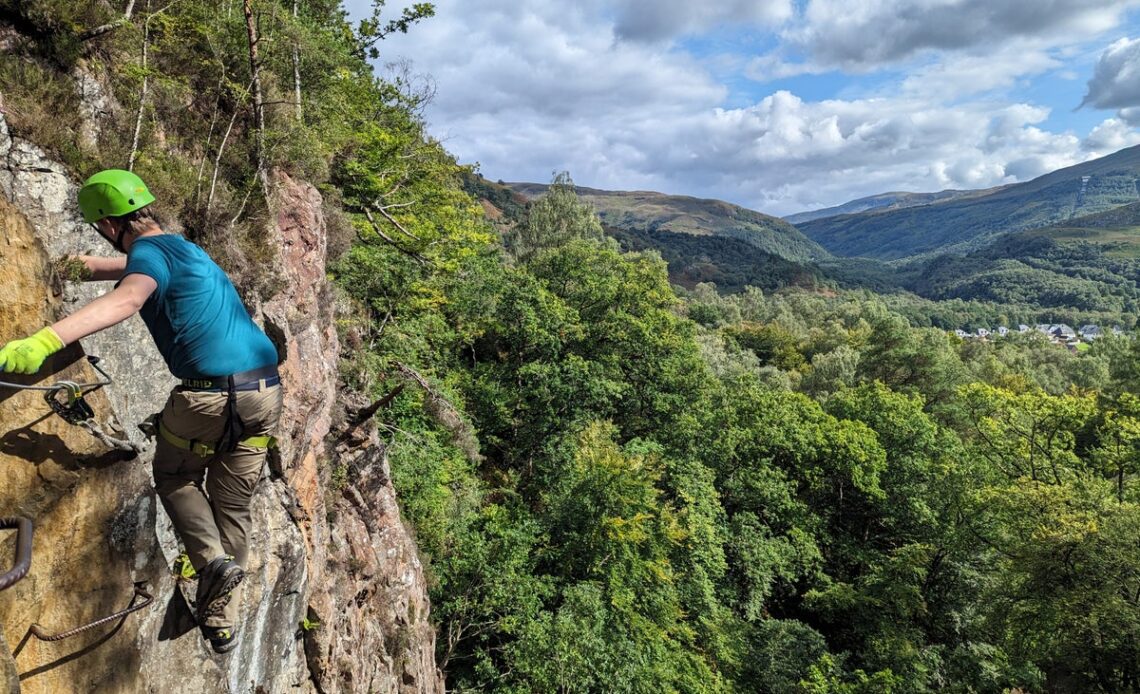It was while wrestling with a harness in the Vertical Descents centre, gearing up to tackle Scotland’s only via ferrata, that I realised I was actually feeling nervous.
The route, open all year round, is pitched as “a wonderful high-altitude climbing experience” in Kinlochleven, Lochaber, long regarded as the outdoor capital of the UK and encompassing Glen Coe, Ben Nevis and Fort William.
Under the instruction of our guide, New Zealander Jay Campbell, we – three family members who were all via ferrata veterans, and me, a first-timer – strapped ourselves in tightly so that, as Jay said, “if you tip upside down, you don’t fall out.”
Scaling vie ferrate, Italian for “iron paths”, has proved a popular activity and can be found all over the world. Today, there are some 3,000 vie ferrate worldwide, most found across the Alps, where there are around 700 in Italy alone.
The writer ready for her climb
(Kirsten Henton)
The via ferrata course at the Anantara Al Jabal Al Akhdar Resort in Oman’s Hajar Mountains, which is 200 metres long and 2,000 metres high, is the highest in the Middle East. Mountain Torq, Asia’s first and the world’s highest, peaks at an eye-watering 3,776 metres as it ascends the northern rock face of Mount Kinabalu in Malaysia.
These routes are typically a mixture of cables, iron staples (rungs) and rods, bridges and ladders secured to sheer rock faces, enabling climbers to reach otherwise near-impossible precipices.
Read more on Scotland travel:
And these iron paths aren’t new. They have a centuries-old legacy in mainland Europe, having been used for practical purposes as well as recreational climbing, particularly in the 19th century when the trend for scaling new, unconquered heights was raging and people used rudimentary methods of chains and ropes to reach hair-raising peaks. They were also utilised during the First World War to move Italian troops between high-altitude points in the Dolomites.
The route at Kinlochleven is a little more modest. Consisting of 450 rungs and around half a mile of cable, it allows climbers to reach roughly 250 metres above sea level – still impressive, still dizzyingly high. But the real appeal lies in the course’s setting, which snakes up and over one of the region’s most impressive waterfalls, the Grey Mare’s Tail. A single drop waterfall, it spills close to…
Click Here to Read the Full Original Article at The Independent Travel…
